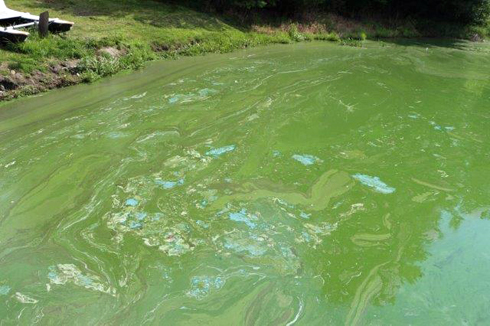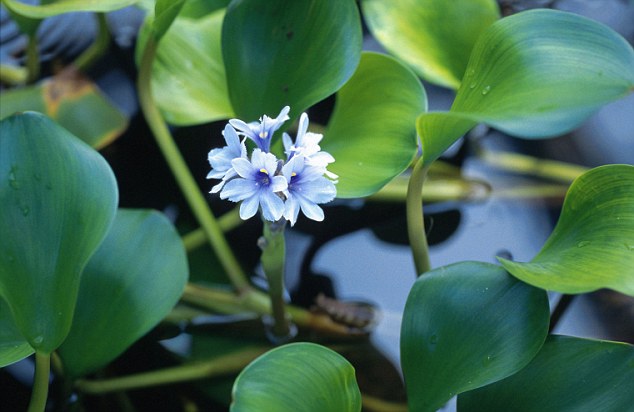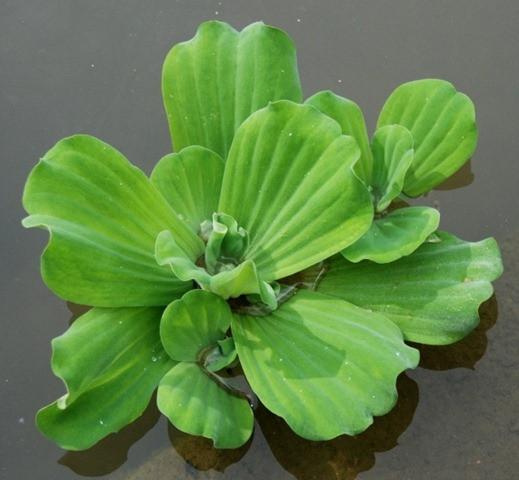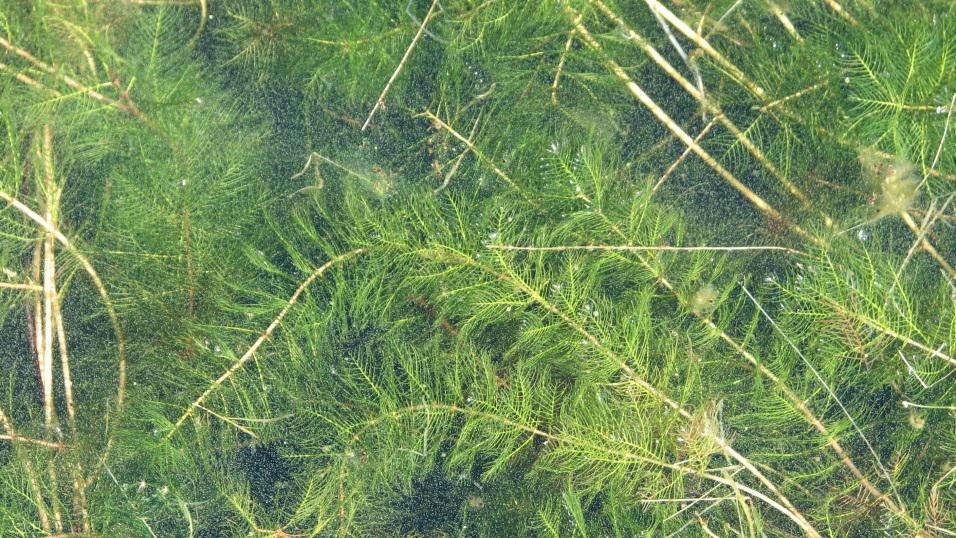Pond Weeds Identification and Removal Guide
Types of Pond Weeds - Understanding Aquatic Weeds & Their Impact
Owning a lakefront property is rewarding in itself. I can’t think of a more relaxing way to wake up in the morning than grabbing a cup of coffee and overlooking the lake from the privacy of my home.
However, owning a lakefront home comes with additional responsibilities, that is if you actually want to enjoy swimming on your beachfront or simply attracting fish to your dockside.
Whether you just purchased your first lakefront home or you have decided its time to take your beachfront back, we are going to help you identify freshwater pond weeds that grow in your lake or pond and then we are going to tell you how you can control them so you can enjoy your beachfront.
Floating Plants & Algae
Floating plants and algae are notorious for overspreading in lakes and ponds and make it difficult for you to enjoy recreational activities on your beachfront.
Algae
Generally there are 3 types of nuisance algae; filamentous, blue green and planktonic, that can quickly overtake your beachfront making recreation activities difficult and cause unpleasant odors.
Learn how to identify the type of algae you have growing in your pond or lake…
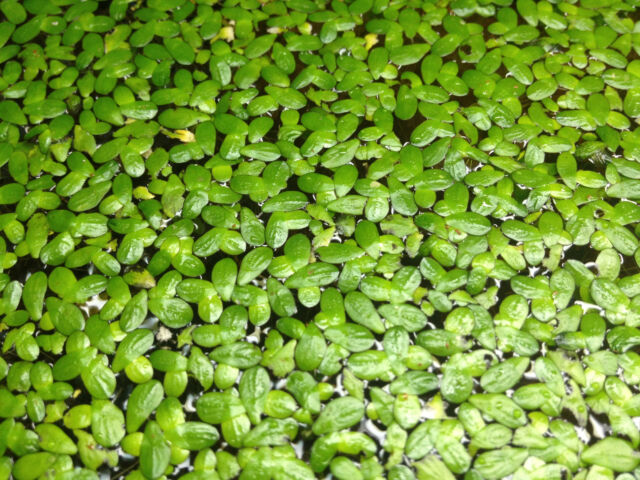 Duckweed
Duckweed
Duckweed grows quickly and produces new offshoots rapidly making it essential to get under control before spreading throughout your beachfront. Individual plants consist of a single, flat oval leaf that is no more than ¼ of an inch long and floats on the surface of still-moving lakes and ponds.
Learn how to control Duckweed…
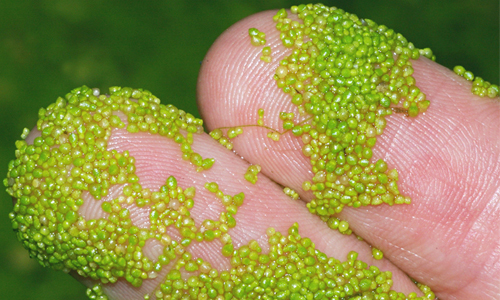 Watermeal
Watermeal
Watermeal is a very tiny light green free-floating rootless plant that is often associated with colonies of duckweed. Often, watermeal will reduce oxygen levels in the water making it impossible for aquatic life to survive.
Learn how to control Watermeal…
Water Hyacinth
Water hyacinth is an invasive species from South America that is a free-floating perennial plant and can grow up to 3 feet in height. It is a very aggressive invader that can form thick mats and deplete oxygen levels.
Learn how to control Water Hyacinth…
Water Lettuce
Water lettuce is another invasive species that aggressively causes oxygen depletion and fish kills. It gets its name because it looks like an open head of lettuce floating on top of your lake or pond.
Learn how to control Water Lettuce…
Submerged Plants
Submerged aquatic plants are plants that are completely underwater and typically have a root system in the bottom sediment. The difference between desirable and undesirable plants is really personal taste. However, left unchecked, submerged plants can quickly take over your beachfront bottom making recreational activity undesirable.
Watermilfoil
Watermilfoil has green feather-like leaves and a white to reddish stem. Each plant can produce up to 100 seeds per season and can rapidly take over any beachfront.
Learn how to control Watermilfoil…
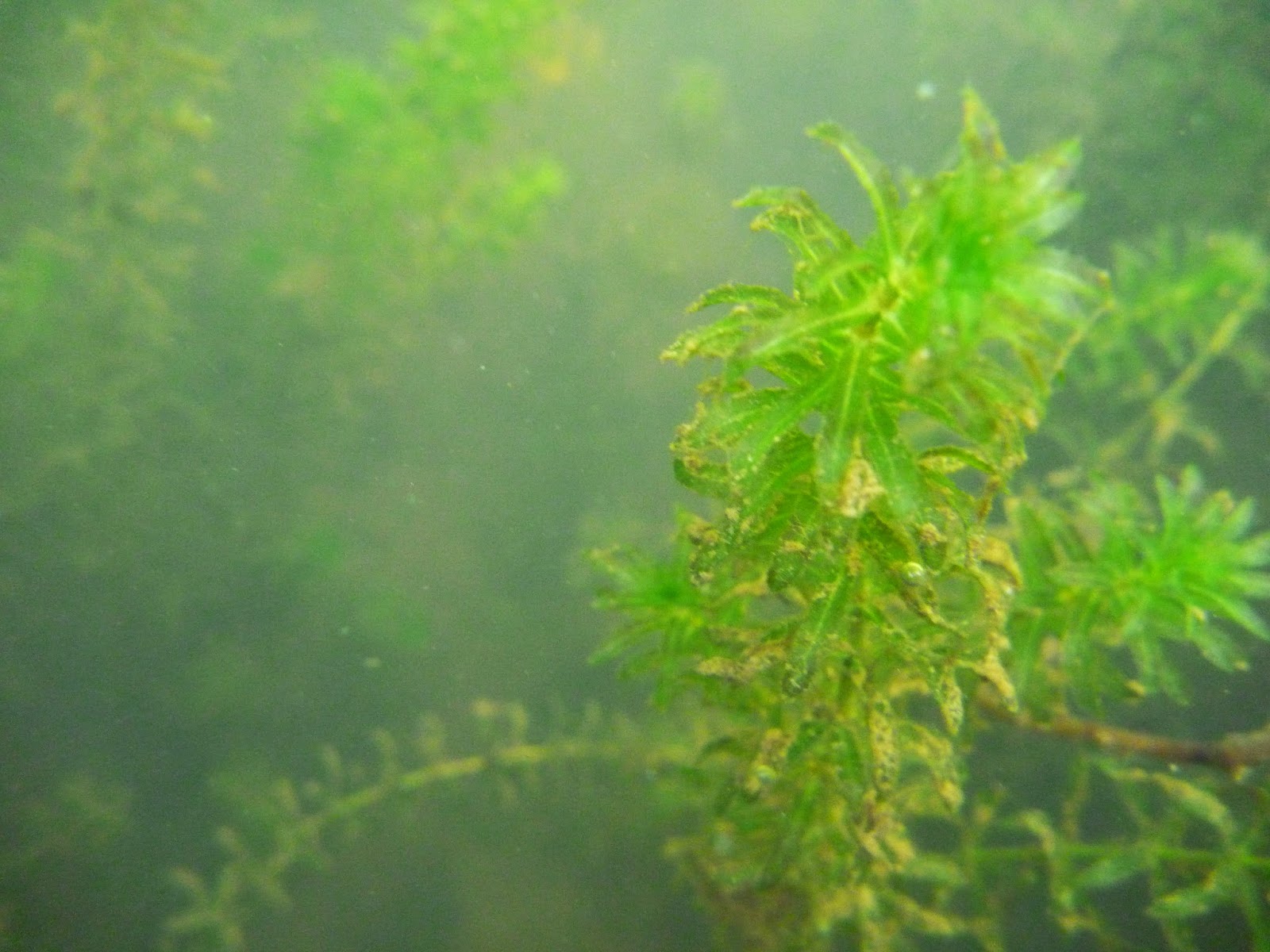 Hydrilla
Hydrilla
Hydrilla is an invasive species that forms thick mats and block sunlight to native plants and can alter the physical and chemical characteristics of any lake. This plant has long stems that branch out at the surface.
Learn how to control Hydrilla…
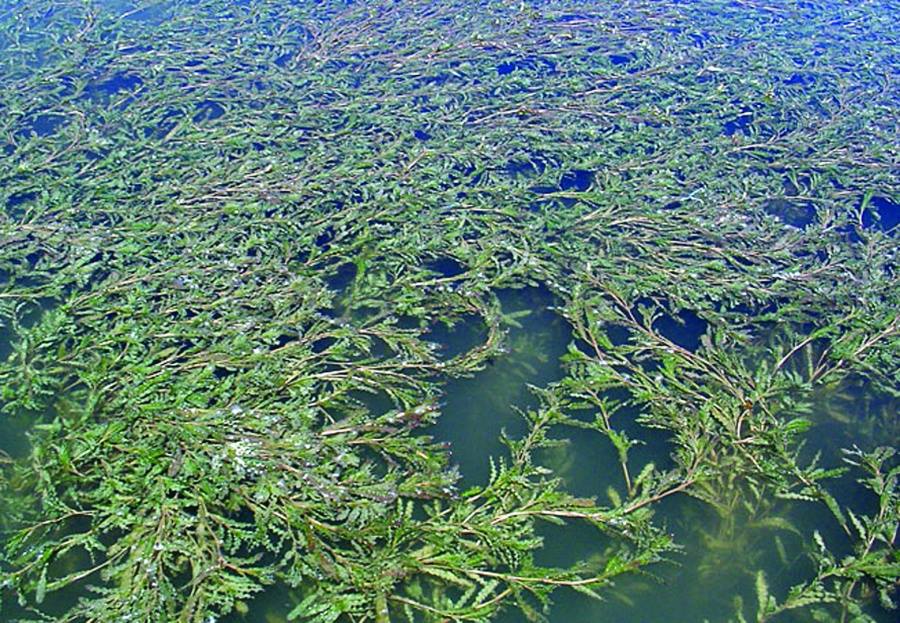 Curly-Leaf Pondweed
Curly-Leaf Pondweed
Curly-leaf pondweed has somewhat translucent olive green to red ruffled leaves with finely serrated edges. This pond weed clings to watercraft and can be nearly impossible to eradicate once it has established a presence.
Learn how to control Curly-Leaf Pondweed…
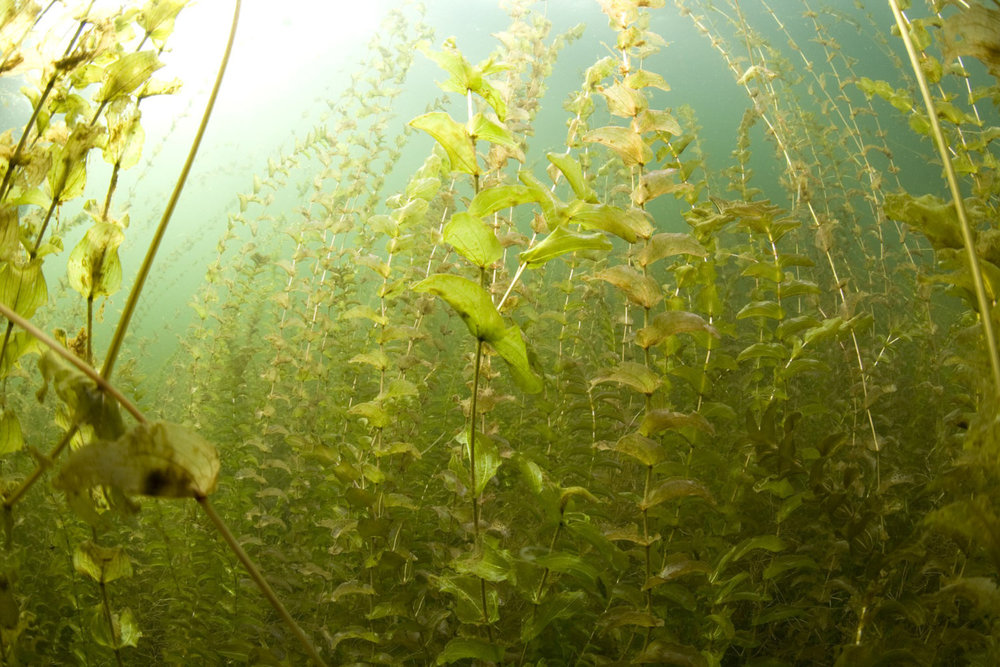 Clasping-Leaf Pondweed
Clasping-Leaf Pondweed
Clasping-leaf pondweed gets its name from the leaves which partially surround its stems and can easily be identified by its thin, delicate, oval shaped leaves. Dense populations of this weed can reduce water temperature and reduce oxygen levels in your lake or pond.
Learn how to control Clasping-Leaf Pondweed…
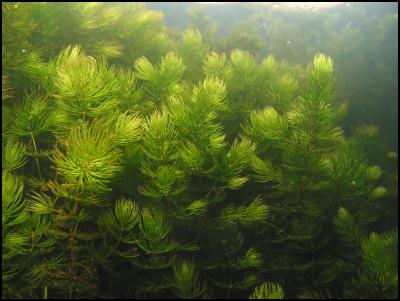 Coontail
Coontail
Coontail grows underwater and has no roots. It is identified by a central hollow stem with dark green leaves that are often bushy near the tip. Although coontail can provide a safe haven for smaller fish, it can quickly spread and takeover any beachfront.
Learn how to control Coontail…
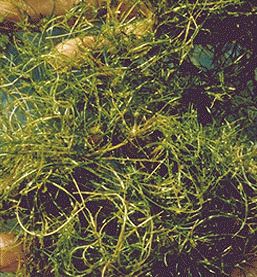 Naiad
Naiad
Naiad has deep green to greenish-purple leaves that are about ½ to 1 inch in length. This pond weed is known to grow out of control and reduce oxygen levels that lead to fish kills.
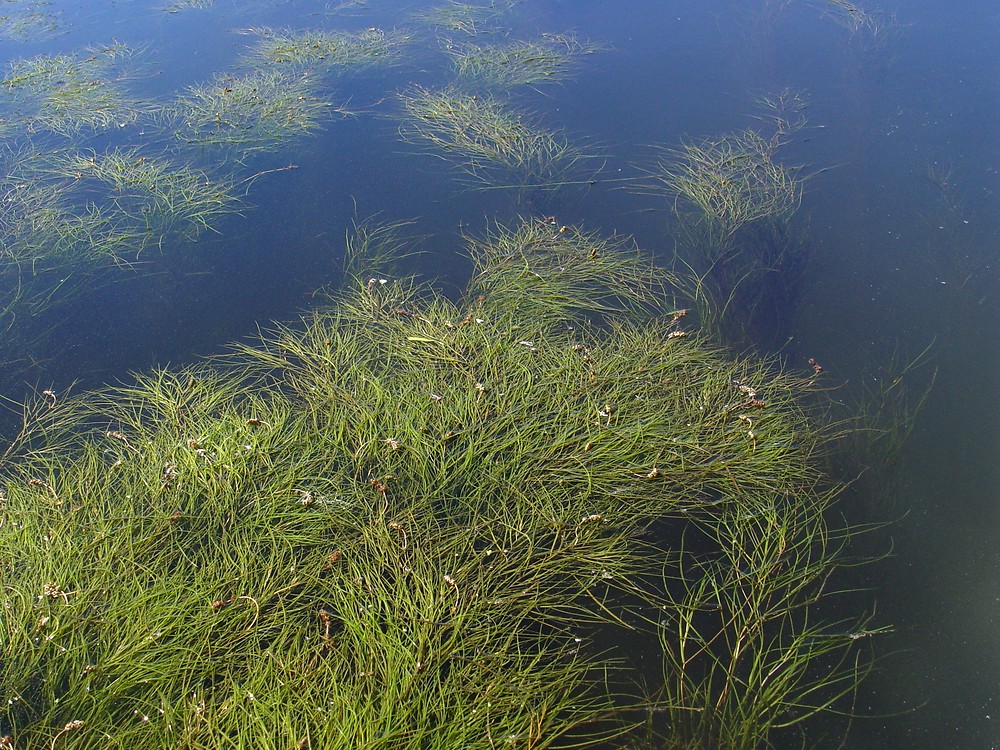 Sago Pondweed
Sago Pondweed
Sago pondweed have long thin branching stems with very thin leaves that are about 1/16 of an inch wide and 2 to over 12 inches long. This weed also produces a nut-like fruit that is 1/8 to ¼ inches long and 1/10 to 1/8 inches wide.
Learn how to control Sago Pondweed…
Emergent Plants
Emergent plants are rooted in the lake bottom and their leaves and stems typically extend out of the water. These plants are commonly located in wetlands and along the shore where water depths reach up to 5 feet.
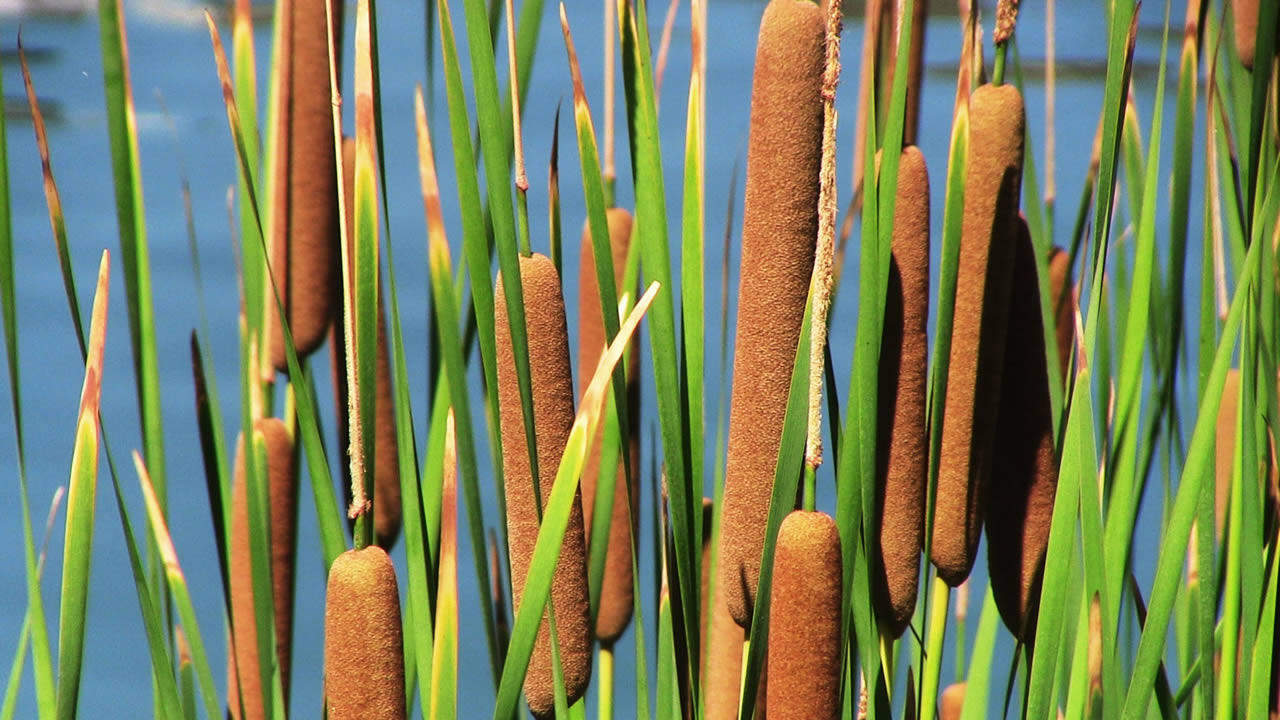 Cattail
Cattail
Cattails grow and spread vigorously by breezes dispersing their seeds and can cause drainage and silting problems as well as crowd out other plants and grasses. They are easily identifiable by their slender stalks that grow up to 10 feet high with a flower at the tip that resembles a cigar-shaped “cattail”.
Learn how to control Cattails…
 Water Lily
Water Lily
There are 58 species of water lily but the most common water lily in North America is Nymphaea odorata. It has rounded, waxy-coated leaves on long stalks that are rooted in lake bottom mud. Water lily’s also produce solitary flowers that have a spiral arrangement of petals.
Learn how to control Water Lilies…
 Water Shield
Water Shield
Water Shield is a floating-leaved plant with oval to football shaped leaves ranging from 4 to 12 cm long and 2 to 6 cm wide. It can easily take over a lake or pond if left unmanaged making it difficult for boats to navigate and undesirable for swimming.
Learn how to control Water Shield…
 Phragmites
Phragmites
Phragmites is a perennial wetland grass that grows 3 to 20 feet tall and has dull, slightly ridged, stiff and hollow stems. This plant has the ability to alter the hydrology of wetland systems, lower plant diversity, impact food webs and reduce diversity and abundance of aquatic life.
Learn how to control Phragmites…
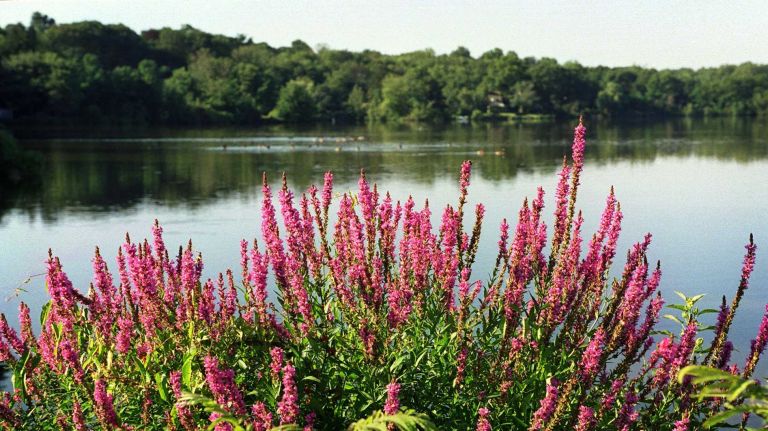 Purple Loosestrife
Purple Loosestrife
Purple loosestrife is recognized by its square shaped stem and showy purple flowers arranged on flower spikes. Its dense root system can change the hydrology of wetlands and the plant overtakes habitats by outcompeting native aquatic plants.
Learn how to control Purple Loosestrife…
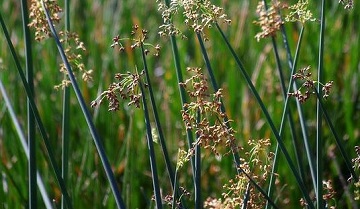 Bulrush
Bulrush
Bulrush is recognized by it loose cluster of brownish flowers and seeds near the top of the stem and stands anywhere from 5 to 10 feet tall.



